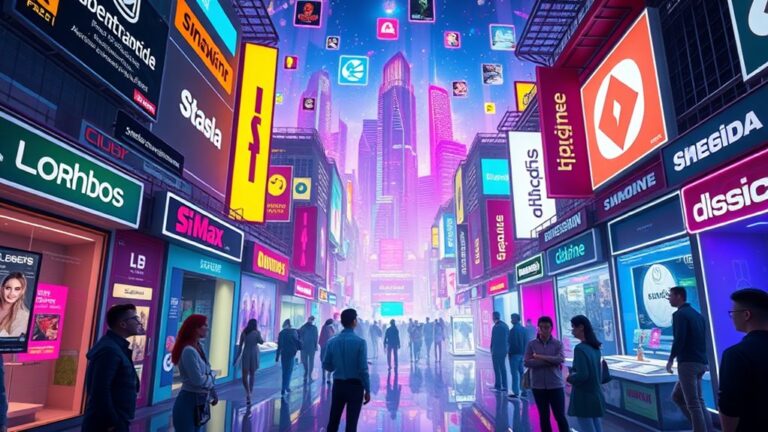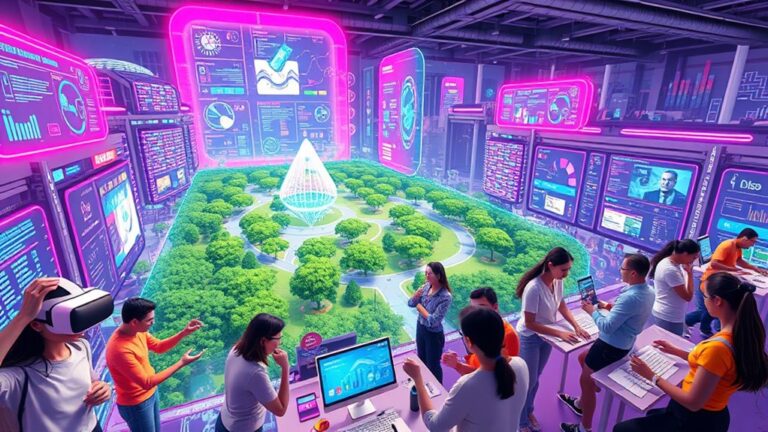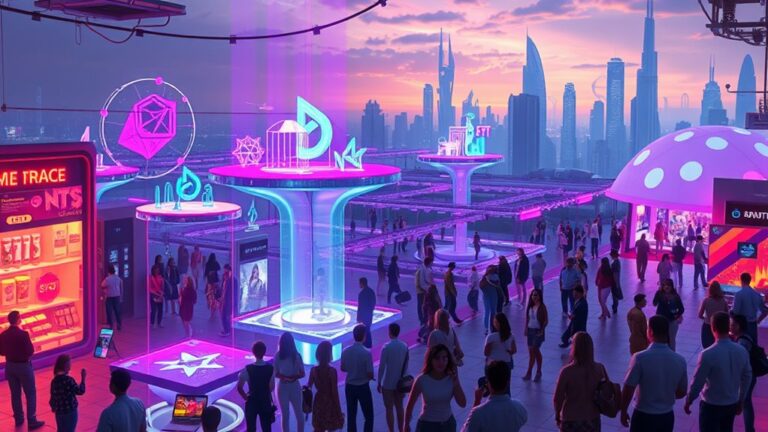
Web3: What Are Its Benefits and Trends?
Web3 is transforming the digital landscape by promoting decentralization and user control. This shift allows individuals to own their data and engage in peer-to-peer transactions securely. Enhanced data security is achieved through technologies like Zero-Knowledge Proofs and homomorphic encryption. New economic opportunities are emerging through decentralized finance and creator-centric models. As Web3 continues to evolve, its societal impact and innovations pose both challenges and advantages for users, paving the way for further exploration of its potential benefits.
Key Takeaways
- Web3 enhances user autonomy and privacy by allowing individuals to control their data through decentralized governance and blockchain technology.
- Innovative data security measures, such as Zero-Knowledge Proofs and homomorphic encryption, protect sensitive information during transactions and communications.
- New economic opportunities arise through creator-centric models, tokenized assets, and decentralized finance, enabling direct engagement and revenue streams.
- Web3 fosters community involvement and inclusivity, empowering users and reducing social media polarization through decentralized platforms and DAOs.
- Future trends include AI integration in smart contracts and the metaverse, although challenges like regulatory uncertainty and scalability remain.
Decentralization and User Autonomy in Web3
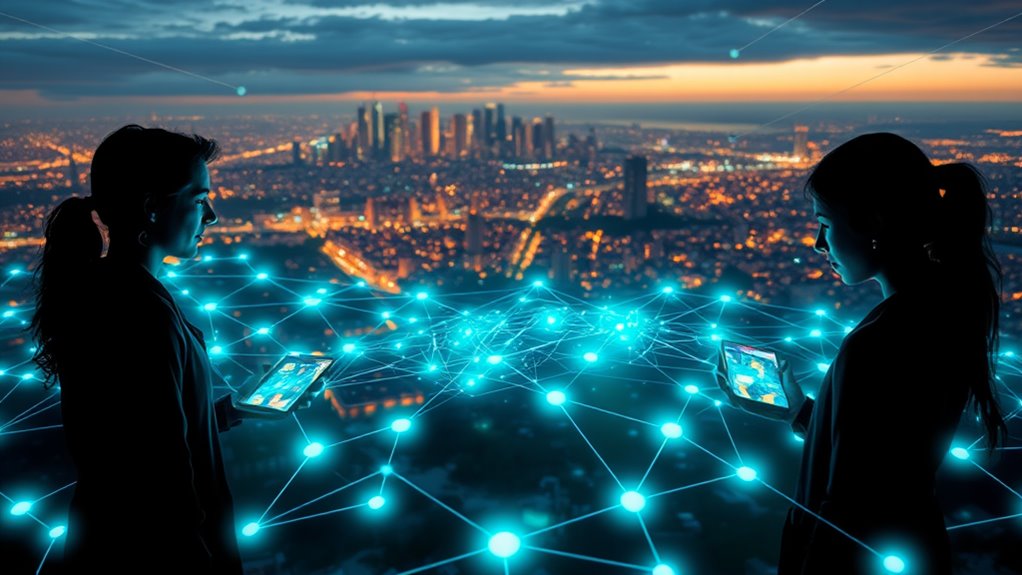
In recent years, the rise of Web3 has significantly transformed the way individuals interact with digital platforms, primarily through its emphasis on decentralization and user autonomy.
Decentralized governance enables communities to establish rules and protocols through consensus rather than relying on a central authority. This shift promotes a democratic internet, where users actively participate in decision-making processes.
Decentralized governance empowers communities to collaboratively shape their digital landscape, fostering a truly democratic internet experience.
Users are empowered to own and manage their personal data, enhancing both privacy and control. By utilizing blockchain technology, Web3 guarantees secure and transparent transactions, allowing for peer-to-peer interactions without intermediaries.
This autonomy fosters independent sharing of information, reducing dependence on centralized databases. Overall, decentralization and user autonomy in Web3 create a more accountable and open digital environment. Additionally, the principles of decentralized finance champion user control over financial interactions, further exemplifying the shift towards a more equitable financial system.
Advancements in Data Security and Privacy

As the digital landscape evolves, advancements in data security and privacy have become essential to ensuring safe interactions within Web3 environments.
Technologies such as Zero-Knowledge Proofs (ZKPs) and Secure Multiparty Computation (SMPC) allow for verification and computation without exposing sensitive information.
Homomorphic encryption enables operations on encrypted data, while ring signatures enhance anonymity.
Decentralized data storage mitigates risks associated with centralized systems, and immutable transactions on blockchain reinforce transparency.
Innovations in identity verification, like Decentralized IDs, empower users to control their personal data.
Privacy-enhancing technologies, such as the Zero-Trust model and tokenization, further secure transactions. Additionally, securing private keys is crucial for protecting digital assets, as vulnerabilities can lead to unauthorized access and potential theft.
Together, these advancements create a more secure framework, fostering trust and privacy in the evolving Web3 ecosystem.
Emerging Business Models and Economic Opportunities

Web3 is reshaping the landscape of business models and economic opportunities by introducing innovative ways for creators and companies to interact directly with their audiences. This technology fosters creator-centric models that enable partnerships without traditional platforms.
Decentralized ownership through assets like NFTs allows users to participate in digital economies effectively. Businesses can also develop new revenue streams via tokenized assets and smart contracts, enhancing efficiency.
Community engagement is prioritized, transforming customers into partners and promoting brand loyalty. Furthermore, Web3 eliminates geographical barriers, enabling global market access for small businesses.
The introduction of decentralized finance (DeFi) offers alternative financial models, while streamlined operations through smart contracts improve efficiency and reduce costs, leading to significant economic potential. Additionally, the integration of smart contracts allows for automated transactions based on predetermined conditions, further enhancing operational efficiency.
Societal Impact and Consumer Empowerment

The evolution of business models in the Web3 landscape not only opens new economic opportunities but also greatly impacts society and empowers consumers.
Web3 enables users to take control of their data through blockchain technology, promoting ownership and privacy. It fosters a more inclusive environment by supporting initiatives like Women of Web3, aiming to bridge digital divides.
Furthermore, decentralized platforms help reduce social media polarization, allowing users to manage their content engagement. Through decentralized autonomous organizations (DAOs), communities engage in collective decision-making, enhancing cooperation.
Additionally, Web3 introduces innovative financial solutions, such as crypto universal basic income, to support underserved populations. This is complemented by the rise of virtual marketplaces in the metaverse, which utilize cryptocurrencies for secure transactions to enhance user experience and economic participation.
Consequently, Web3 not only transforms economic structures but also contributes to a more equitable and empowered society.
Future Innovations and Challenges in Web3
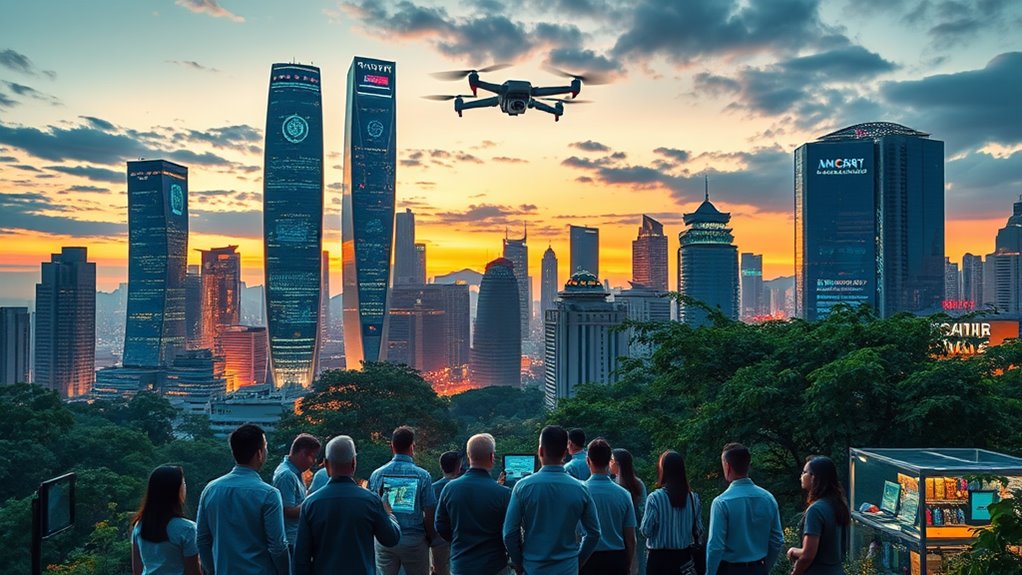
While the potential of Web3 continues to unfold, future innovations and challenges present a complex landscape for developers and users alike. Key advancements include the integration of AI with smart contracts, which allows for real-time adjustments and enhances decision-making. Additionally, the metaverse is experiencing growth, offering immersive virtual environments for user engagement. However, significant challenges remain, such as regulatory uncertainty and scalability issues.
| Innovations | Challenges |
|---|---|
| AI-Driven DAOs | Regulatory Uncertainty |
| Blockchain Security | Mainstream Adoption |
| Decentralized Finance | Scalability Issues |
| Metaverse Integration | Infrastructure Limitations |
These developments and obstacles will shape the future of Web3, influencing its adoption and overall impact on society.
Frequently Asked Questions
How Does Web3 Differ From Web2 in User Experience?
Web3 greatly enhances user experience by enabling decentralized interactions, providing true ownership of digital assets, and fostering community governance, contrasting with Web2’s corporate control and centralized data, thereby empowering users in their digital engagements.
What Role Do NFTS Play in the Web3 Ecosystem?
NFTs play a pivotal role in the Web3 ecosystem by enabling decentralized ownership, enhancing user experiences, and fostering innovation across various industries, thereby facilitating direct interactions between creators and consumers without intermediaries or centralized control.
Can Web3 Be Used for Social Media Platforms?
Web3 can indeed be utilized for social media platforms, offering decentralized networks that empower users with greater control over data, enhanced privacy, innovative monetization options, and community-driven governance, transforming the traditional social media landscape.
How Do DAOS Function in Decision-Making Processes?
In decision-making processes, DAOs, like MakerDAO, utilize decentralized governance and token-based voting. Members propose changes, which are voted on and executed via smart contracts, ensuring transparency, accountability, and community involvement throughout the governance cycle.
What Skills Are Needed to Navigate Web3 Technologies?
To navigate Web3 technologies, individuals require a blend of technical skills, including blockchain knowledge, programming proficiency, and familiarity with decentralized networks, alongside essential soft skills like communication, collaboration, and creative problem-solving to drive innovation.
Conclusion
To sum up, Web3 represents a transformative shift in the digital landscape, where decentralization opens doors to greater user control and privacy. As new business models emerge, they create diverse economic opportunities, fostering innovation and societal empowerment. However, challenges remain, requiring careful navigation. The future of Web3 holds the promise of a more equitable digital world, akin to a vast ocean of potential, where users can chart their own courses amidst waves of change and opportunity.





